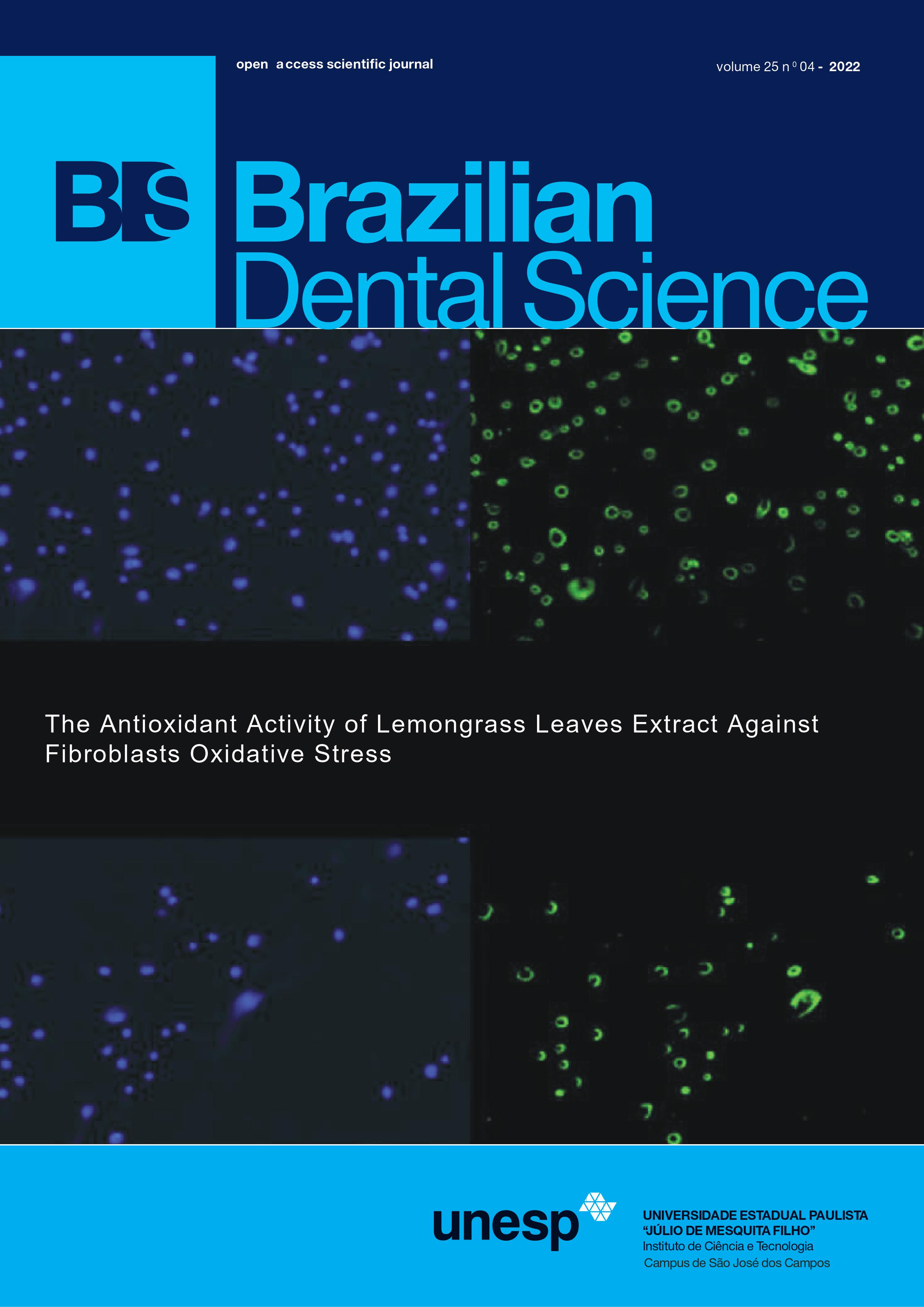Influence of fluoride-releasing materials in the inhibition of enamel and dentin demineralization around restorations
DOI:
https://doi.org/10.4322/bds.2022.e3505Resumo
Objective: The aim was to evaluate the influence of fluoride-releasing restorative materials in enamel and dentin
microhardness. Material and Methods: 40 blocks (5x5x3 mm) from cervical third of human molars received a cavity
preparation between the enamel and dentin, and the restorations were subjected to in vitro caries model. Specimens
were randomly restored with (n=10): conventional glass ionomer cement (Ketac Cem, 3M ESPE); polyacid-modified
composite resin (Ionoseal, VOCO); resin-modified glass ionomer cement (Ionofast, Biodinâmica); or microhybrid
composite resin (Filtek Z250, 3M ESPE). The specimens were sectioned longitudinally and enamel and dentin
Knoop microhardness were determined at different distances from the restorative material (100, 200 and 300 um)
and depth of surface (20, 40 and 60 um). The data were submitted to three-way repeated measures ANOVA and
Tukey´s test (a=0.05). Results: For enamel, the double interactions between material x distance and material x
depth were statistically significant. In all depths and distances, the highest values of enamel microhardness were
observed for Ketac Cem. In dentin, the materials differed statistically from each other, and Ionoseal obtained higher
microhardness values than those found in Ionofast. Conclusion: Conventional glass ionomer cement is more effective
in preventing enamel demineralization around restoration followed by the polyacid-modified composite resin. In
dentin, the polyacid-modified composite resin obtained better performance than resin-modified glass ionomer cement.
KEYWORDS
Compomers; Dental caries; Glass ionomer cements; Hardness tests; Composite Resins.
Downloads
Downloads
Publicado
Como Citar
Edição
Seção
Licença
TRANSFERÊNCIA DE DIREITOS AUTORAIS E DECLARAÇÃO DE RESPONSABILIDADE
Toda a propriedade de direitos autorais do artigo "____________________________________________________________________" é transferido do autor(es) para a CIÊNCIA ODONTOLÓGICA BRASILEIRA, no caso do trabalho ser publicado. O artigo não foi publicado em outro lugar e não foi submetido simultaneamente para publicação em outra revista.
Vimos por meio deste, atestar que trabalho é original e não apresenta dados manipulados, fraude ou plágio. Fizemos contribuição científica significativa para o estudo e estamos cientes dos dados apresentados e de acordo com a versão final do artigo. Assumimos total responsabilidade pelos aspectos éticos do estudo.
Este texto deve ser impresso e assinado por todos os autores. A versão digitalizada deverá ser apresentada como arquivo suplementar durante o processo de submissão.




























